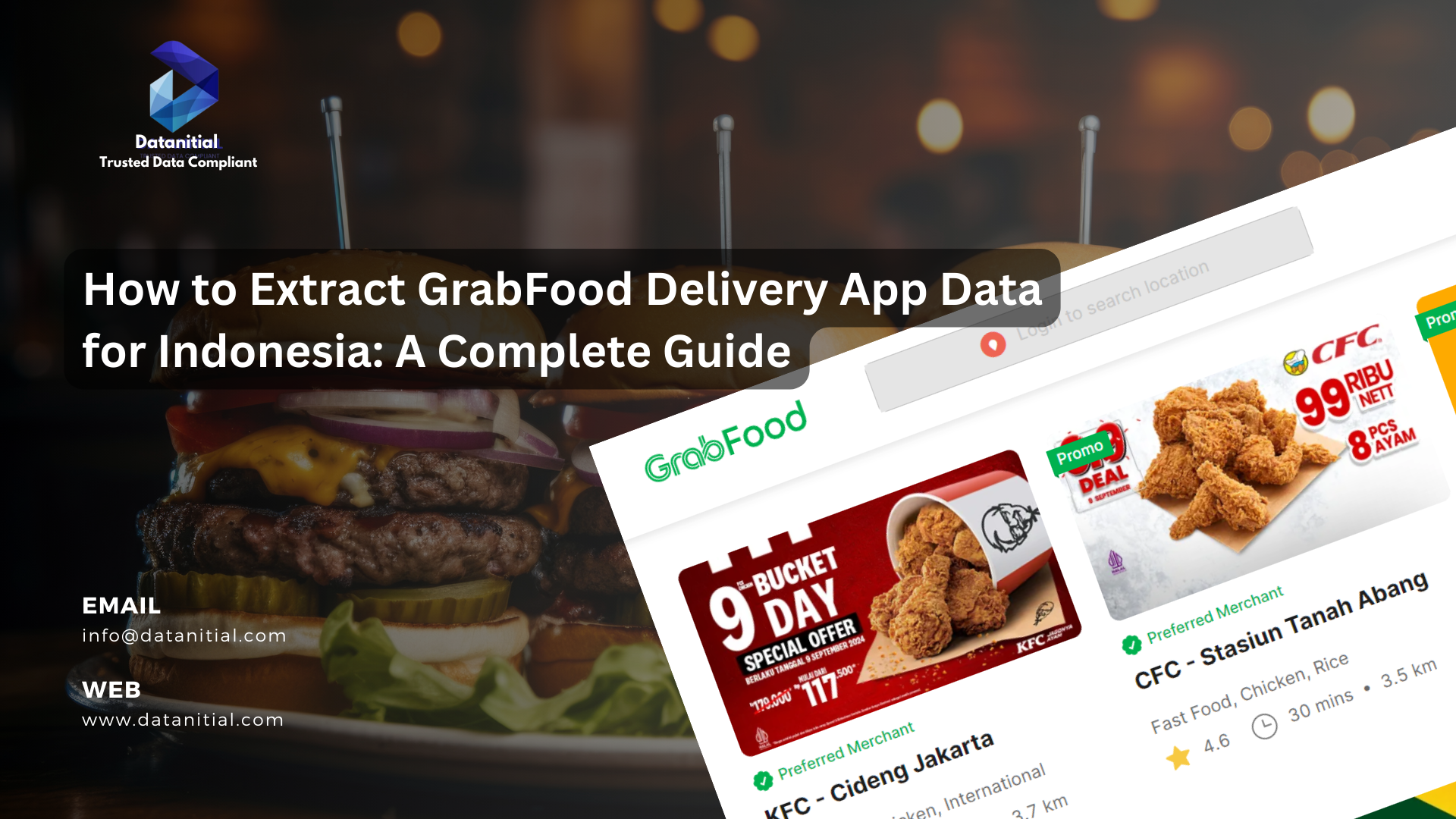Koramangala, Koramangala 8th Block, Bangalore - South, Karnataka


Koramangala, Koramangala 8th Block, Bangalore - South, Karnataka

Introduction
In today’s competitive food delivery market, having access to comprehensive data is crucial for businesses looking to gain a competitive edge. GrabFood, one of Southeast Asia's leading food delivery platforms, offers a treasure trove of valuable data, including restaurant listings, menus, prices, ratings, reviews, and more. For businesses in Indonesia, extracting this data can provide significant insights for competitor analysis, menu optimization, and targeted marketing strategies. In this guide, we'll walk you through the essentials of GrabFood app data extraction and how to overcome common challenges with advanced techniques.
Overview of GrabFood App Data Extraction
What is GrabFood App Data Extraction?
GrabFood app data extraction involves collecting publicly available data from the GrabFood platform. This data can include restaurant details, menu items, pricing, customer ratings, reviews, and promotional offers.
A Brief History of GrabFood
Launched in 2018, GrabFood quickly became a significant player in the food delivery space across Southeast Asia, particularly in Indonesia. The app's growth mirrors the increasing demand for convenient food delivery solutions, driven by the region's urbanization and smartphone penetration.
The Significance of Data Extraction
Data extraction from GrabFood can be a game-changer for food chains, restaurant owners, and competitive analysts. It helps businesses understand market trends, optimize their offerings, and make data-driven decisions that enhance their market positioning.
Scraping Menu, Price, Ratings, Reviews, and Offers
Extracting specific data from the GrabFood app, such as menus, prices, ratings, reviews, and offers, can provide valuable insights into customer preferences and competitor strategies. Here's a breakdown of the critical data points:
Key Challenges in GrabFood App Data Extraction
Extracting data from GrabFood or any other food delivery app isn’t without its challenges. Here are some common obstacles you might encounter:
Key Solutions for Data Extraction Challenges
Methods Used in GrabFood App Data Extraction
Data extraction from GrabFood can be accomplished through several methods, including:
Latest Trends and Developments
FAQs about GrabFood App Data Extraction
Q: Is data extraction from GrabFood legal?
A: Data extraction is generally legal when it involves publicly available information. However, it’s essential to review GrabFood’s terms of service and local data privacy laws to ensure compliance.
Q: What are the best tools for extracting data from GrabFood?
A: Popular tools include Scrapy, Beautiful Soup, and custom Python scripts.
Q: How can I ensure the accuracy of the data extracted?
A: Implementing validation checks and cross-referencing extracted data with live data on GrabFood can help ensure accuracy.
Q: How often should I extract data to keep it up-to-date?
A: The frequency of extraction depends on your needs; however, regular updates (e.g., daily or weekly) are recommended for competitive analysis.
Expert Tips and Advice
Conclusion
Extracting data from the GrabFood app can offer invaluable insights into the food delivery market in Indonesia. By understanding the challenges and leveraging advanced solutions, businesses can gain a competitive advantage and make data-driven decisions. Whether you’re a restaurant owner, a food chain operator, or a market analyst, this guide equips you with the knowledge to navigate the complexities of GrabFood data extraction.
Ready to take your business to the next level? Contact us at Datanitial to learn how our customized data extraction solutions can help you maximize your insights and drive success!

Our representative will get in touch with you within 8 Hours Maximum.
We will collect all the necessary details from you.
Our team will analyze and provide you with a cost & time estimate.
We maintain full confidentiality under a signed NDA.

Find quick answers about our web and mobile data extraction services.
Web data extraction is the process of automatically collecting data from websites to analyze pricing, trends, and more.
We extract data from e-commerce, travel, food delivery, real estate, finance, and ride-hailing platforms worldwide.
Yes, Datanitial specializes in scraping data from Android and iOS apps, including live pricing, reviews, and availability.
We provide real-time and scheduled scraping options so your data is always current and accurate for insights.
Yes, we follow ethical scraping practices, using only publicly available data and complying with legal standards.
Yes, we deliver clean, structured data in CSV, JSON, Excel, or via API based on your business requirements.
Absolutely. We create tailored scraping solutions aligned with your data goals, platforms, and industry needs.